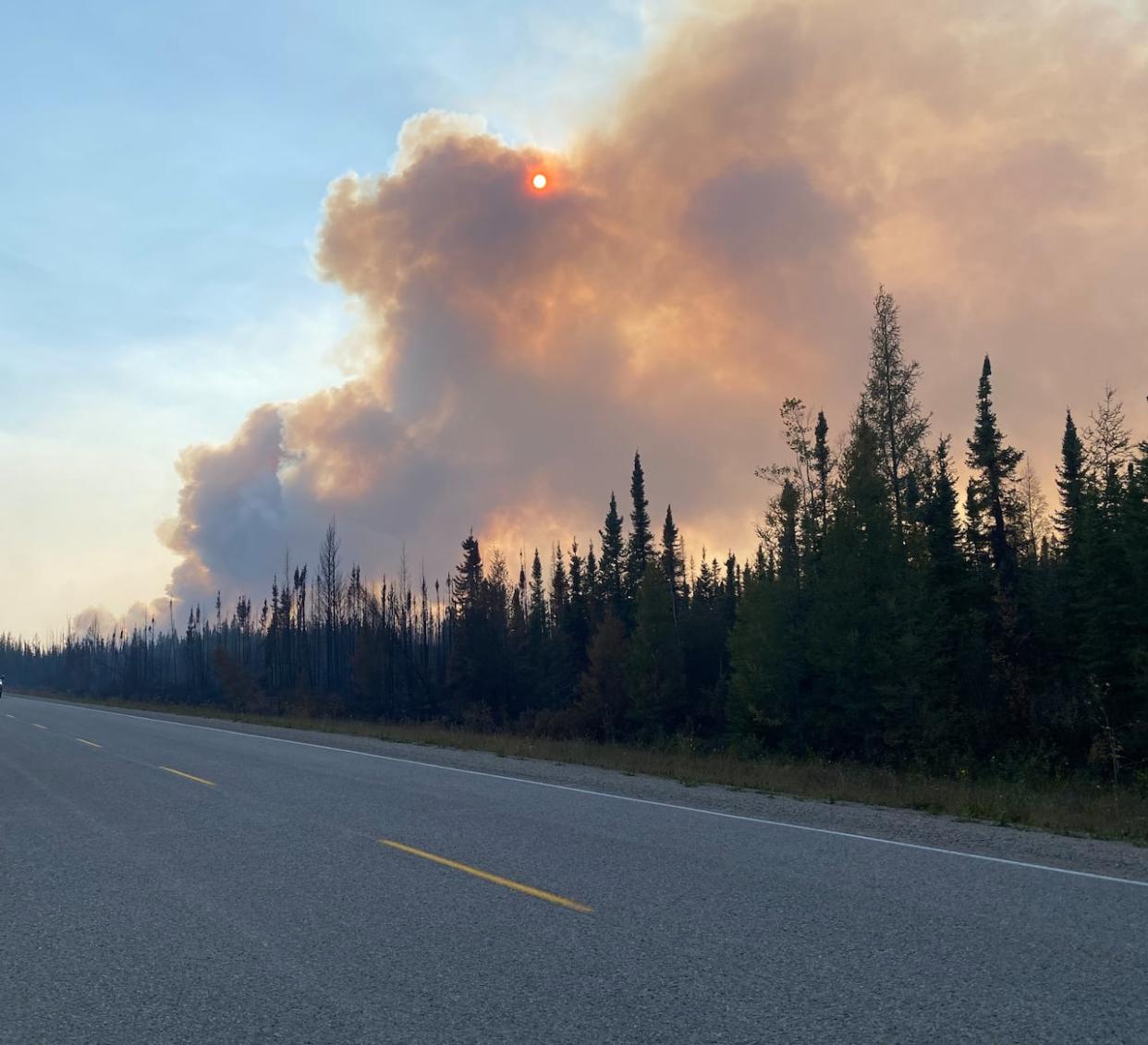Crews battling wildfires near Hay River, Fort Smith, N.W.T., expect more challenges Monday

Fire crews battling wildfires near Hay River and Fort Smith, N.W.T., were preparing for another challenging day on Monday, according to territorial fire information officer Mike Westwick.
Conditions will be similar to those on Sunday, he said, with winds from the southwest gusting to around 35 to 40 kilometres per hour – which could spread the Hay River area fire farther north and east.
Fire activity in the morning should be tempered by an inversion – where cooler air gets trapped closer to the ground and warmer air is higher in the atmosphere, he explained in a written update.
That will lead to a delay in heating on the fire, and slightly higher humidity.
Airtankers were taking to the skies immediately Monday morning in an effort to hit targets while the inversion remains to cool those lines and slow potential eastern growth, he said.

Mike Westwick, an N.W.T. Fire Information Officer is shown during a media briefing on Aug. 22, 2023. (CBC News )
According to Westwick, crews are also:
Assessing and protecting additional structures on Highway 1 and within the K'átł'odeeche First Nation Reserve.
Using information from nightly heat scans to "seek and destroy" hotspot targets throughout the day.
Maintaining sprinklers until homes in Hay River and the surrounding area are secured. This includes areas like Riverwoods and Delancey.
Tightlining, or using crews and heavy machinery to dig away mid-and deep forest fuels right on the edge of the fire, running from the shores of Great Slave Lake through the entire Hay River corridor to the Highway 1 Junction to the west of town. Machinery and crews have made it through approximately 90 per cent of this 35-kilometre section of fire edge, according to Westwick's update.
Tightlining with heavy machinery to secure both fingers of fire that crossed Highway 5 into the K'átł'odeeche First Nation Reserve. The first finger has been entirely covered by heavy equipment, according to Westwick's report. More than three kilometres of line has been completed with heavy machinery on the second finger on the east end.
Following up behind heavy machinery in all areas in order to "blackline," or extinguish anything hot or burning within the edge of a wildfire to build a strong, secure perimeter around populated areas and avoid further damage.
Continuing to tightline around the edge of the fire to secure the Kakisa area and support a safe return.
Patrolling and taking action along Highways 2 and 1 to protect structures and infrastructure in the area.
The very hot, dry and windy conditions on Sunday led to significant fire growth on the east side of the Hay River, Westwick said.
A portion of the eastern-most finger of fire pushed five kilometres north to the shores of Great Slave Lake on the K'átł'odeeche First Nation reserve and nearly 14 kilometres north at the northeast corner of the fire to the shores of the Mackenzie River from KM 156 on Highway 1.
However, the fire did not affect any structures or move into the most populated areas of the K'átł'odeeche First Nation reserve, he said.
'We're going to be throwing everything at this'
Fire officials had to reposition firefighters who had been making progress in the area in order to allow air tankers to get in and work to reduce the fire intensity, Westwick explained.
Tankers were not effective during what Westwick described as "explosive fire activity" seen on the eastern-most finger of fire, though.
While the portion of the fire that has reached the lake cannot expand farther north, officials are worried it could grow to the east, he said.
"Certainly we'll be working hard to maintain our lines in the Hay River corridor there and prevent as much growth as we can," he said.
"We're going to have aircraft active. We're going to be throwing everything at this."
Ignition operations south of Enterprise on Sunday were successful, according to Westwick's report, which will help halt the fire's potential growth toward Highway 1 and structures in the area.
Defences on the Hay River side of the fire all held on Sunday, as they did on the first finger of fire that had crossed Highway 5.
Westwick called that "great news."
"There was good work done under challenging conditions," he said on Monday. "And we're going to be doing that same kind of good work today under some more challenging conditions with temperatures getting about a degree hotter and winds being a bit higher."
On Sunday, crews experienced what Westwick called "crossover," conditions in which the level of moisture in the air is lower than the temperature.
Sunday's temperature reached 25 C, but humidity stood at just 24 per cent.
"What those kinds of conditions support is a lot of burning, and that's what we saw," Westwick said.
More challenging conditions around Fort Smith
Crews battling the wildfire threatening Fort Smith and the surrounding areas were also expecting challenging conditions Monday, Westwick said.
Winds from the south gusting to 40 kilometres per hour could push the fire north and challenge protections that crews have built up.
"The team is going to be throwing everything they have at holding those lines, keeping those defences high and doing everything they can to keep those communities safe there," he said.
Crews made good progress on Sunday, Westwick said.
About 22 kilometres of the northern fire perimeter have now received enough firefighting efforts that the fire is not expected to spread.
"That's a big win," he said.
About 58 per cent, or around 85 kilometres, are at a point where the fire is not expected to grow given the current weather conditions and firefighting efforts.
Still, Westwick said, "It's been a very challenging fire to manage and continues to be."
The Fort Smith area remains under threat, but that threat is decreasing, he said.
Other communities also remain at risk.


